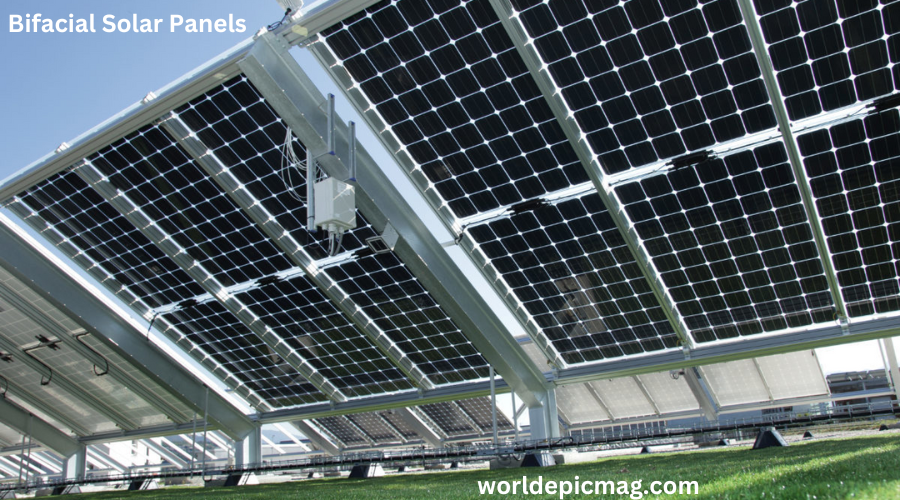Bifacial solar panels are revolutionizing the solar energy industry with their enhanced efficiency and ability to capture sunlight from both sides. Unlike traditional monofacial panels, which only capture sunlight from the front, bifacial panels offer the potential for higher energy output by utilizing light reflected from surfaces like the ground, water, or rooftops. Let’s explore how bifacial solar panels work, their advantages, and the future they hold in the renewable energy landscape.
What Are Bifacial Solar Panels?
Bifacial solar panels are a type of photovoltaic (PV) panel that can absorb sunlight from both the front and the back. The front side captures direct sunlight, while the rear side absorbs reflected light, often referred to as albedo. These panels are typically made of durable materials like glass on both sides, allowing light to pass through and improving the overall durability of the system.
How Do Bifacial Solar Panels Work?
The principle behind bifacial solar panels is simple: they capture more sunlight by using both sides. Here’s how it works:
- Front Side: Like traditional solar panels, the front of a bifacial panel faces the sun and captures direct sunlight, converting it into electricity.
- Back Side: The rear side captures sunlight that reflects off the ground or surrounding surfaces. This additional light contributes to the total energy production, increasing the panel’s efficiency.
By positioning bifacial panels in locations with high reflectivity, such as on light-colored roofs, over snow, or above bodies of water, the back panel can capture more reflected light, boosting energy output.
Advantages Of Bifacial Solar Panels
-
Increased Energy Output
The primary benefit of bifacial solar panels is their higher energy efficiency. The ability to absorb light from both sides increases total energy production by up to 30% compared to traditional panels. This makes them especially attractive for maximizing energy output in limited space.
-
Durability and Longevity
Bifacial panels are often encased in dual layers of glass, providing enhanced protection against environmental factors such as wind, rain, or dust. This design improves the longevity of the panels, making them more resistant to wear and tear, reducing maintenance costs over time.
-
Improved Land Utilization
With bifacial panels, the same installation space can generate more energy, improving land use efficiency. This feature is particularly beneficial for solar farms or urban environments where space may be limited. By producing more energy per square meter, bifacial panels optimize the available area.
-
Cost-Effective in the Long Run
While bifacial solar panels may have a higher upfront cost than monofacial panels, their increased efficiency often results in faster return on investment (ROI). Over time, the extra energy generated by the back panel can significantly reduce electricity costs, making them cost-effective in the long term.
Applications Of Bifacial Solar Panels
Bifacial solar panels are versatile and can be used in various applications:
- Residential Installations: Homeowners can benefit from the increased efficiency of bifacial panels, especially when installed on rooftops with reflective surfaces or in areas with high albedo, such as snowy regions.
- Commercial and Industrial Use: Businesses with large open spaces can install bifacial panels to maximize energy output and reduce reliance on the grid, lowering operational costs.
- Solar Farms: Bifacial panels are ideal for large-scale solar installations where land is a premium resource. By using bifacial panels, solar farms can generate more power with less land, improving overall efficiency.
Challenges Of Bifacial Solar Panels
While bifacial solar panels offer significant benefits, they do come with certain challenges:
- Higher Installation Costs: The initial cost of bifacial panels is generally higher than traditional monofacial panels. Primarily due to the advanced technology and materials used in their construction.
- Mounting Considerations: To optimize performance, bifacial panels need to be mounted in ways that allow light to reach the rear side. This may require specific mounting structures, such as elevated or tilted installations, which can add to the overall project cost.
- Varying Performance Based on Location: The amount of energy captured by the rear side of a bifacial panel depends largely on the surroundings. Areas with high reflectivity, such as white surfaces, water, or snow, will see greater benefits than areas with dark or non-reflective surfaces.
The Future Of Bifacial Solar Panels
As solar energy continues to evolve, bifacial solar panels are expected to play a key role in the future of renewable energy. The growing demand for more efficient, cost-effective solutions is driving advancements in bifacial technology. Making them more accessible to consumers and businesses alike. With improvements in solar panel design, energy storage, and grid integration. Bifacial panels are set to become a mainstream solution for both small and large-scale solar installations.
Conclusion
Bifacial solar panels represent a significant leap forward in technology, offering increased efficiency, durability, and versatility. By capturing sunlight from both sides, they can generate more energy in the same space. Making them an attractive option for residential, commercial, and industrial use. While the upfront costs may be higher, the long-term benefits of higher energy output. Durability make solar panels a wise investment for the future. As the world continues to embrace clean energy. Bifacial panels will undoubtedly play a vital role in powering a sustainable future.
Also Read This: solar microgrids
